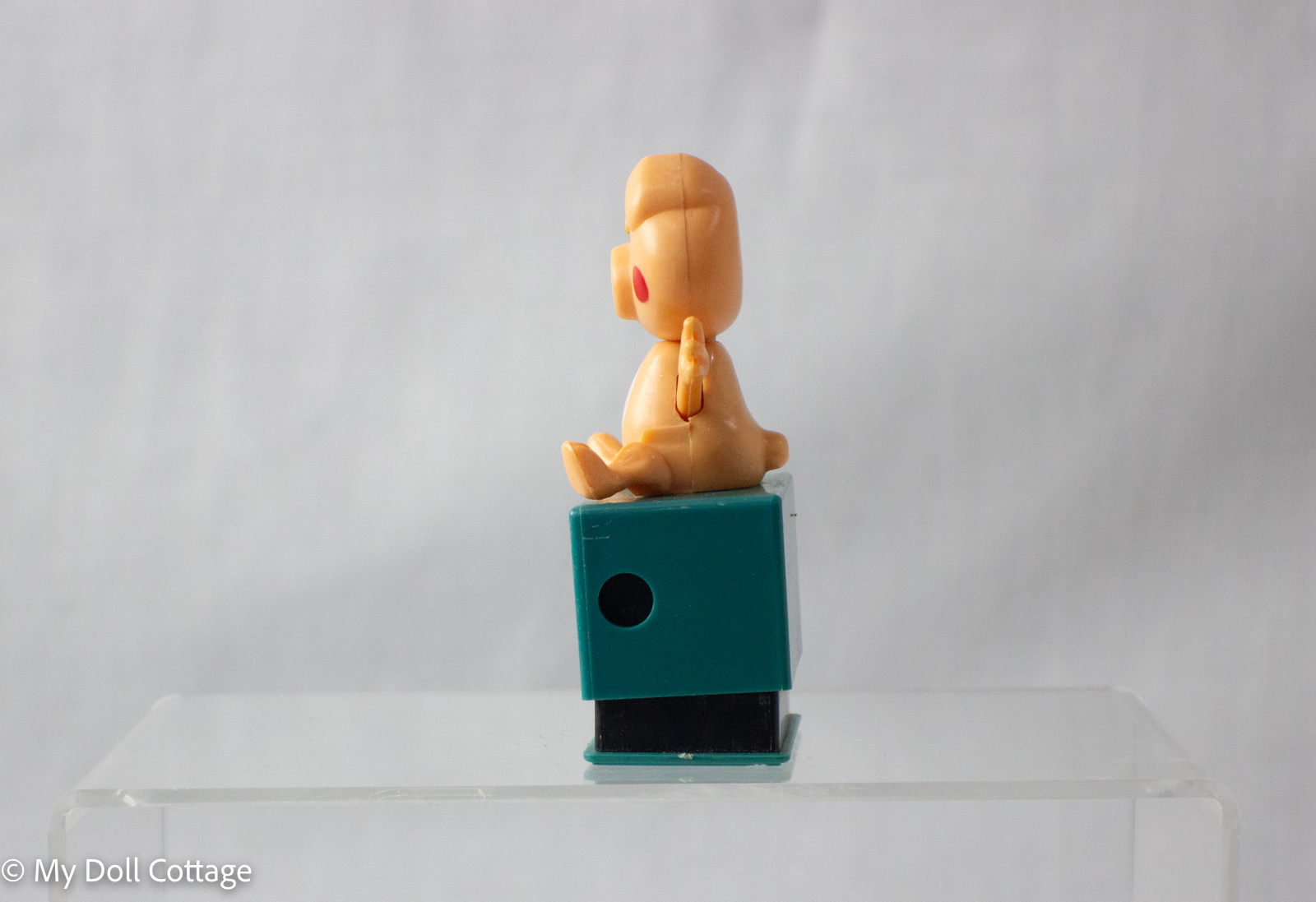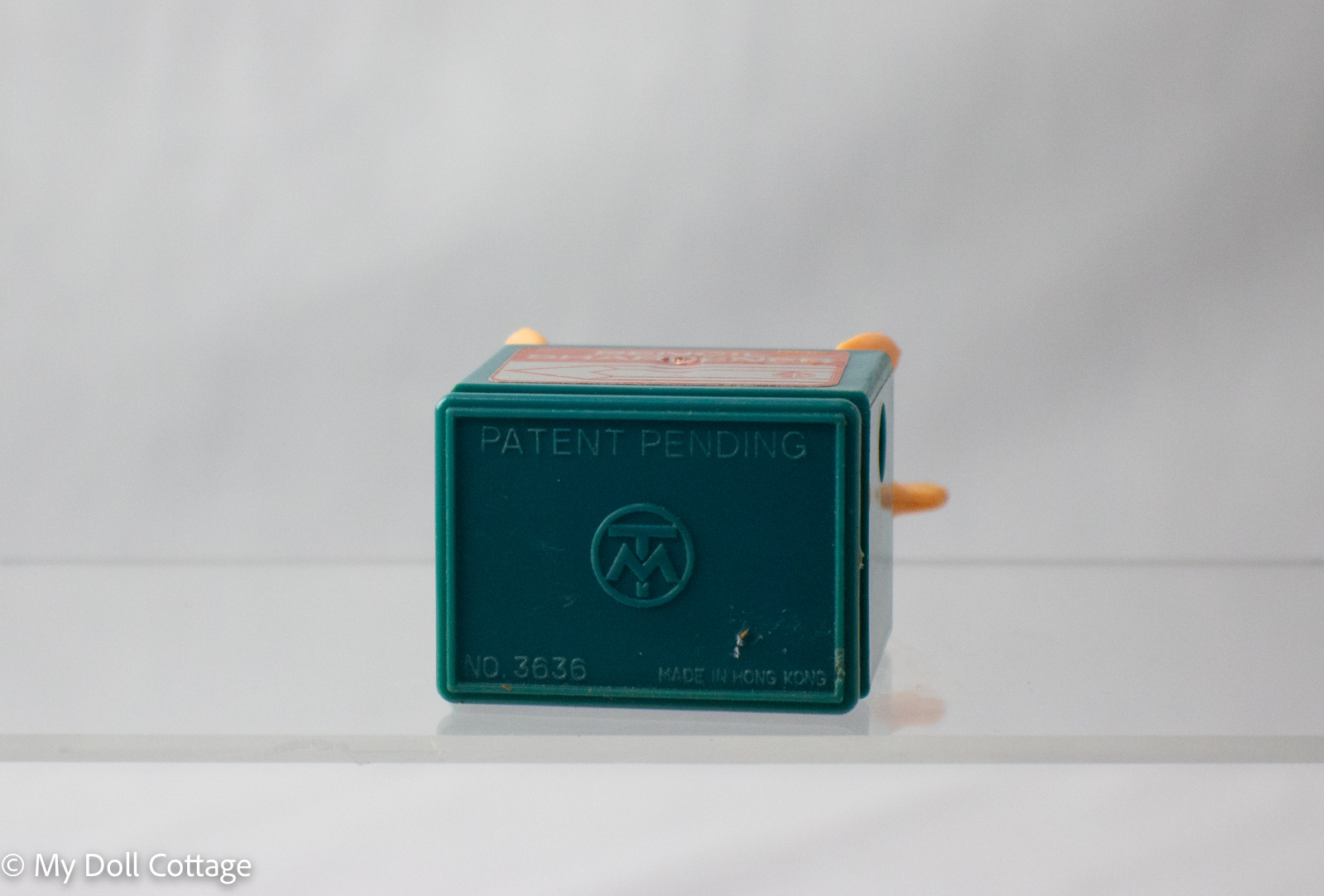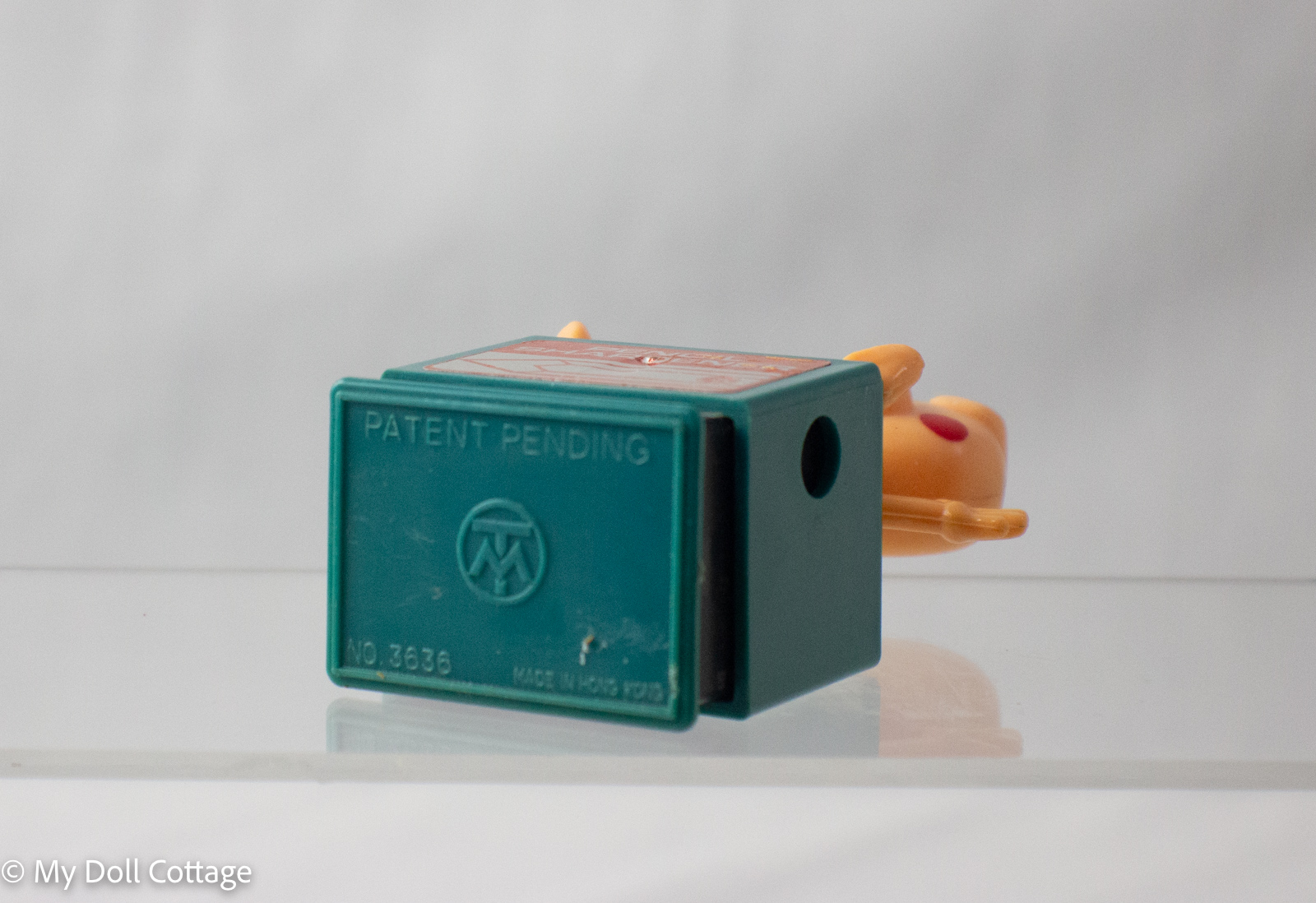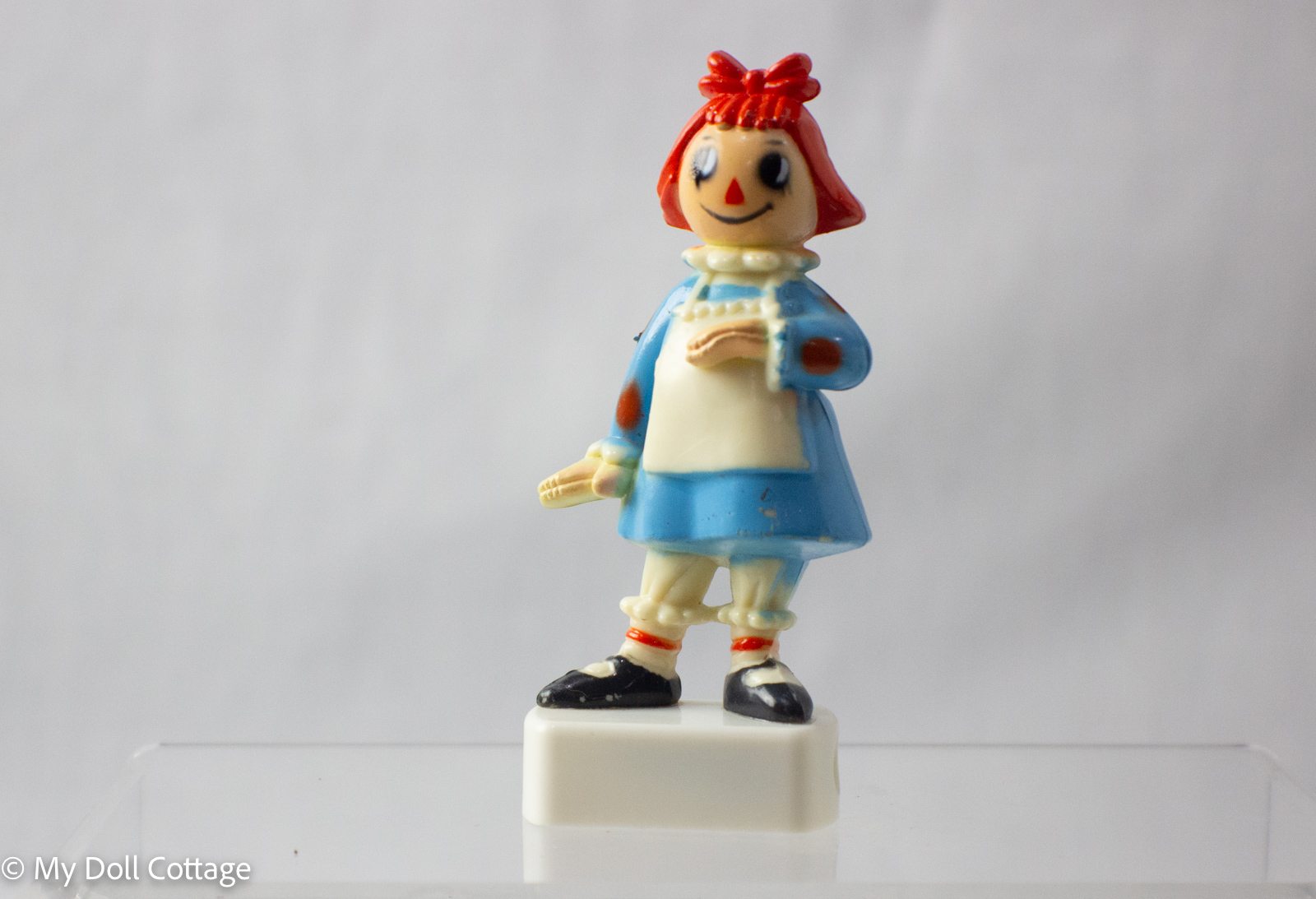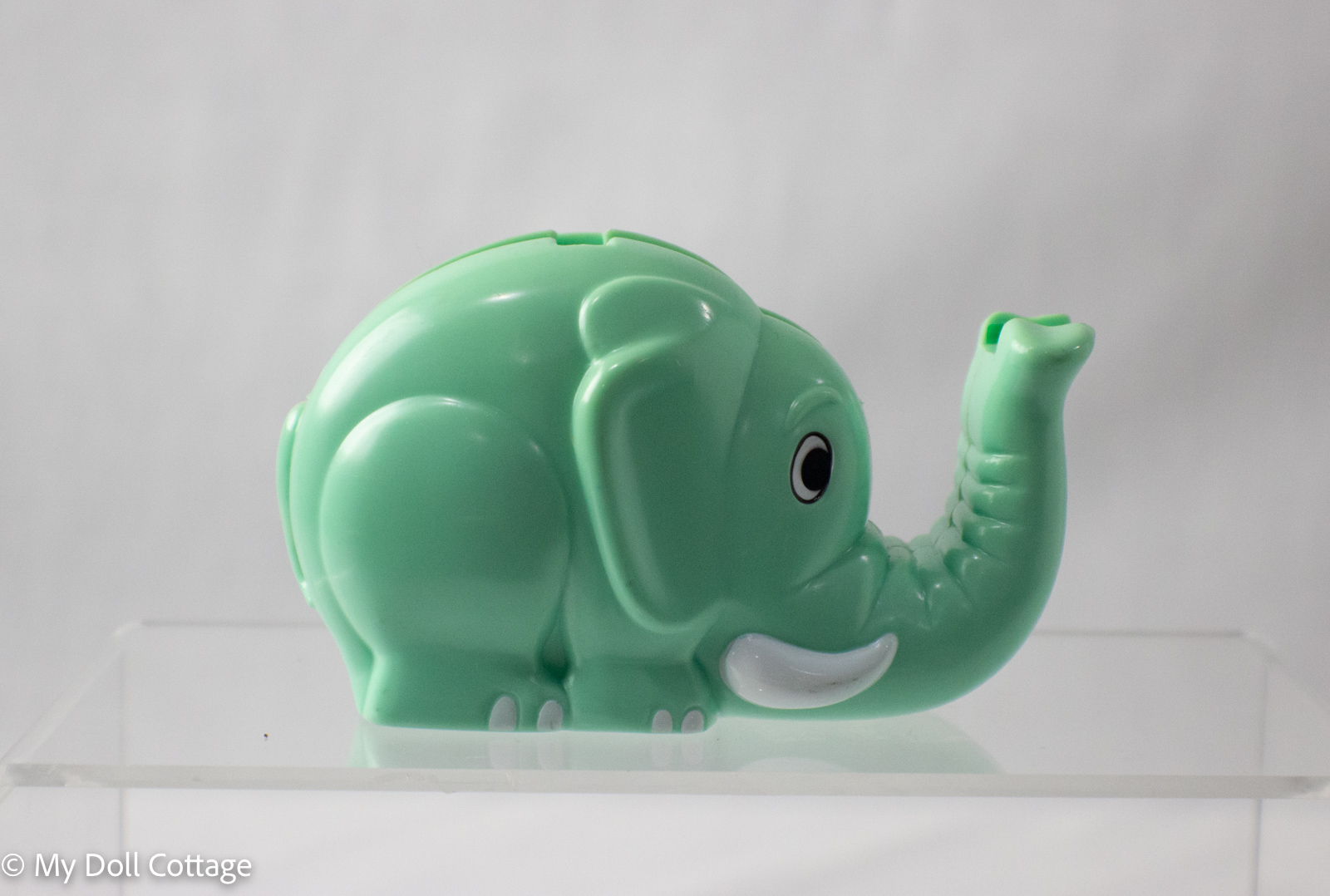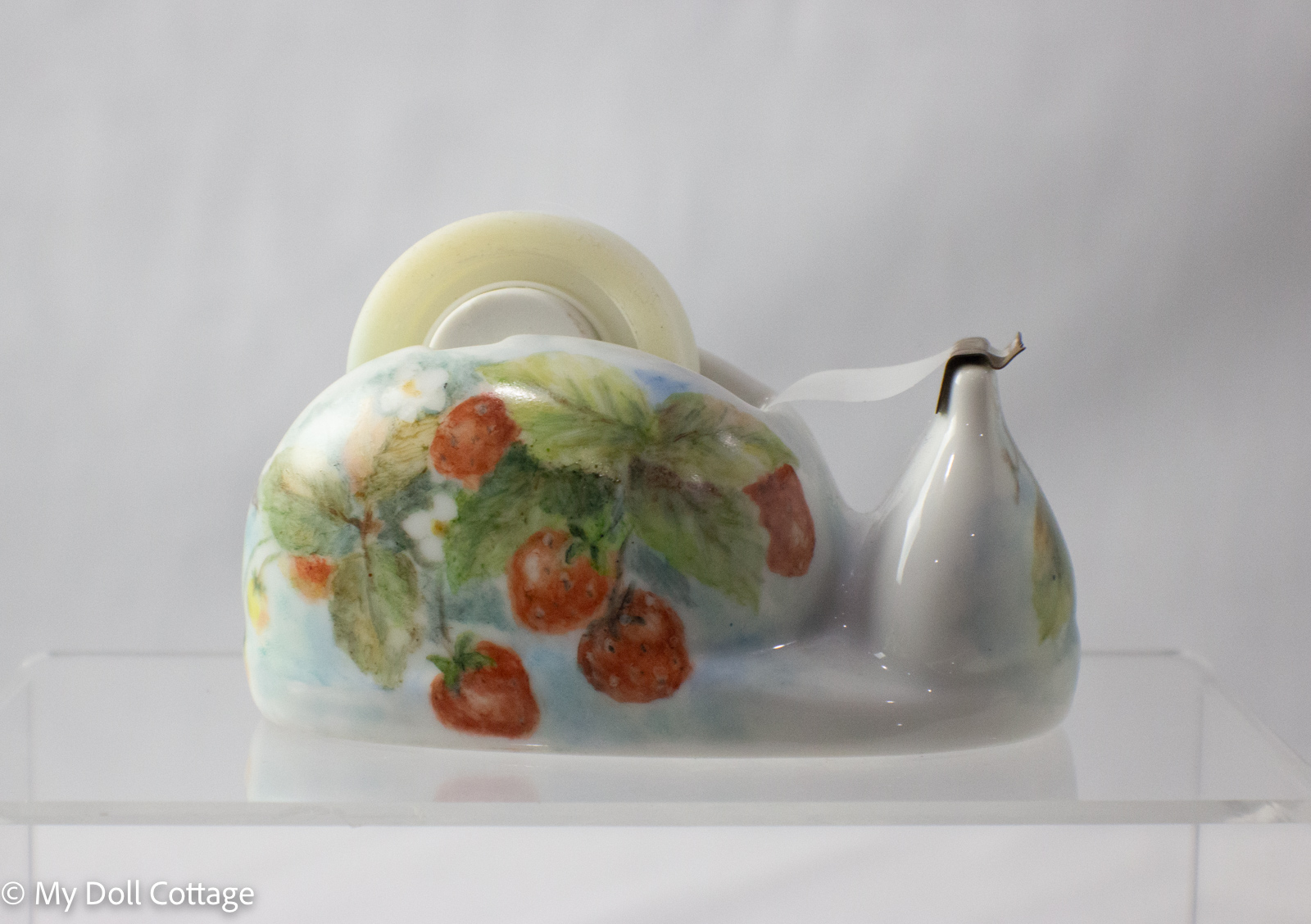1970s Pig Pencil Sharpener – Spring-Release Hong Kong Toy

Vintage pig pencil sharpener from the 1970s, made in Hong Kong. Features a spring-release mechanism that makes the pig’s arms wave when pressed down.
This charming 1970s pig pencil sharpener is a nostalgic collectible made in Hong Kong. Measuring approximately 100 x 40 x 50mm, it features a seated pig with red cheeks, movable spring-release arms, and a green base housing the sharpener. When pressed, the pig’s arms wave up and down, adding playful movement to a functional school accessory.
The sharpener is marked Patent Pending, TM inside a circle, No. 3636 which were typical identifiers of small toy and novelty manufacturers during this period. These quirky sharpeners were popular in the 1970s and often sold as affordable novelties for children.
Condition notes:
Features
Measurement: 85 × 35 × 60 mm
Condition: Good - Some wear and signs of age, but overall intact with working spring-release function.
Markings: Patent pending TM in a circle No 3636. Made in Hong Kong
Dating Note: Date is an estimate based on available research and stylistic features. If you have additional information, please contact us to help update our records.
Made from the following materials
Hard plastic dolls and toys emerged as a significant innovation in the toy industry during the mid-20th century, revolutionizing the way dolls were designed and manufactured. Hard plastic is a type of thermoplastic, characterized by its durability, lightweight nature, and resistance to breakage. This material became popular for creating dolls, action figures, and various toys due to its versatility and ability to hold intricate details and vibrant colors.
The development of hard plastic allowed for the mass production of toys that were not only affordable but also more resilient than earlier materials like composition or porcelain. As a result, manufacturers were able to produce a wide variety of designs, from classic baby dolls to trendy fashion figures, each with detailed facial features and movable limbs. This material also enabled the incorporation of new techniques, such as molded hair and painted eyes, which enhanced the realism and appeal of the dolls.
Among the earliest forms of hard plastic used in toy manufacturing was **Bakelite**, created in the early 1900s by Belgian chemist Leo Baekeland. Bakelite is one of the first synthetic plastics, made from phenol and formaldehyde. Its properties, including heat resistance and electrical insulation, made it ideal for various applications, including toys. While Bakelite itself is not commonly used in doll-making today, its introduction paved the way for the development of modern plastics in the toy industry.
**Catalin** is another early form of hard plastic that emerged in the 1930s and was often used for creating vibrant toys and dolls. Like Bakelite, Catalin is a thermosetting plastic known for its durability and ability to hold color well. Catalin toys often featured bright, translucent colors and intricate designs, capturing the imaginations of children and collectors alike.
As hard plastic became the standard for many types of dolls and toys, it solidified its place in the industry, leading to the creation of iconic brands and beloved characters. Today, hard plastic dolls and toys continue to be popular, appreciated for their longevity and the nostalgia they evoke. Collectors value vintage hard plastic toys for their craftsmanship and the unique place they hold in the history of toy making.
At our museum, we celebrate the legacy of hard plastic dolls and toys, highlighting their role in shaping the modern toy industry and their enduring appeal across generations.
Related Dolls and Toys from our collection





